Calling all pet enthusiasts and aspiring bird whisperers! 🦜✨
Are you ready to crack the code and unravel the 7 Proven Secrets on How to Train a Parrot to Talk? Prepare yourself for a journey into the captivating realm of avian communication.
Imagine your home filled with the melodic chatter of your feathered friend, transforming ordinary moments into extraordinary ones.
This blog isn’t just about training; it’s a symphony of insights, a crescendo of secrets, and a guide that turns your parrot into the talkative companion you’ve always dreamed of.
In this article, we’ll explore the art of teaching your vibrant companion to talk, turning your space into a lively haven of chirps and greetings.
Importance of Communication with Your Parrot
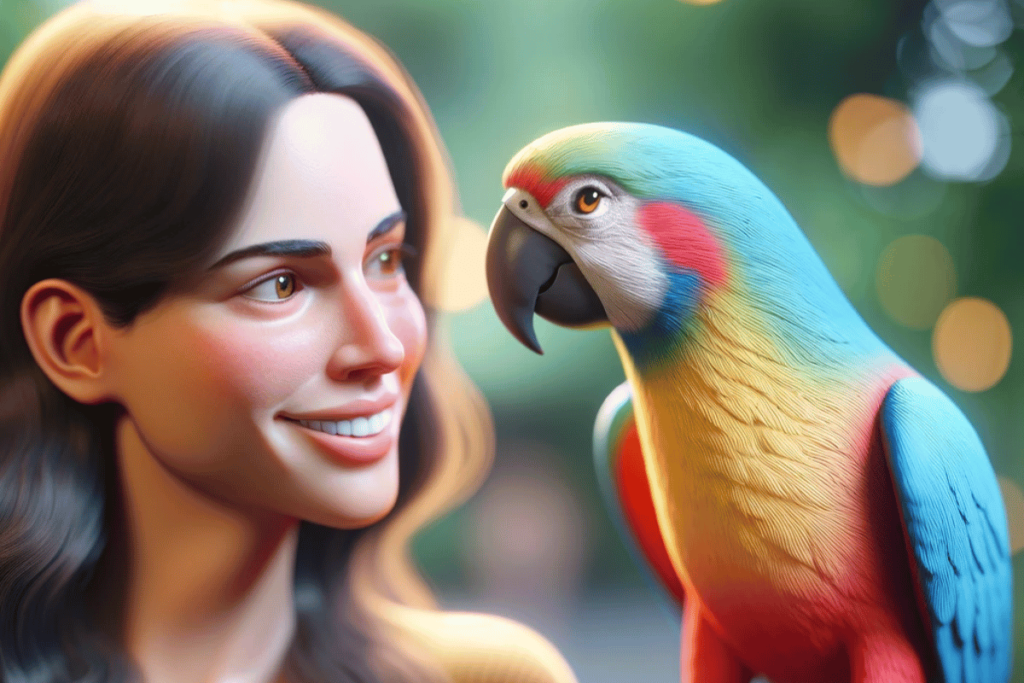
Picture this: a world where you and your parrot exchange pleasantries and share the daily happenings. Communication isn’t just for humans; it’s the secret sauce to building a deeper connection with your feathered buddy.
We’ll dive into why fostering this communicative bond is essential for both you and your parrot’s well-being.
Basic Considerations Before Starting Training
Before we jump into the exciting world of parrot chatter, let’s lay some groundwork. We’ll discuss the optimal age to start training, creating a cozy environment for learning, and establishing a strong bond with your parrot. These considerations set the stage for a successful and enjoyable training journey.
Stay tuned for more chirp-worthy tips and tricks as we navigate through the exciting process of teaching your parrot to talk! 🦜✨
Choose the Right Age for Training
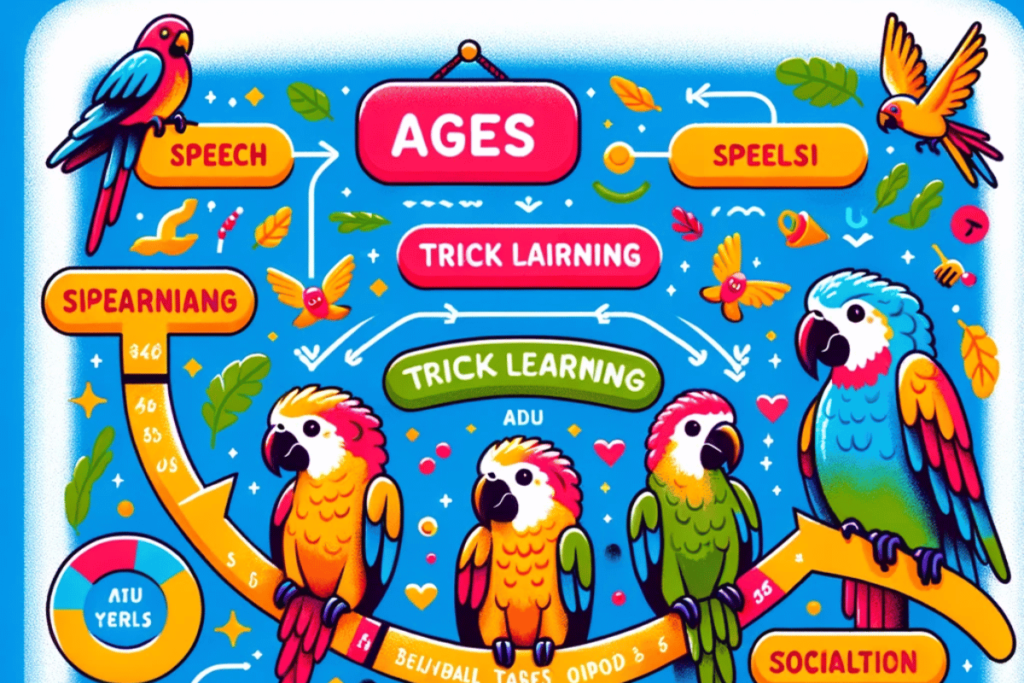
Just like humans, parrots have different learning curves at various life stages. We’ll guide you on picking the perfect time to start the training sessions. Whether you have a chirpy fledgling or a wise old bird, we’ve got the scoop on when to kick off the talking adventure.
Create a Comfortable Environment
Creating the ideal learning space is crucial for your parrot’s success. We’ll explore setting up a cozy and stimulating environment that encourages your feathered friend to spread its wings and unleash its inner chatterbox. Get ready to transform your living space into a parrot-friendly haven!
Develop a Bond with Your Parrot
Building a strong bond is the secret sauce to successful parrot training. Become your parrot’s trusted confidant. From spending quality time together to understanding your parrot’s unique personality quirks, we’ll help you lay the foundation for a lifelong partnership.
Get ready to embark on this delightful journey of feathered friendship and watch as your parrot becomes your talkative companion in no time! 🌈🦜
Teaching Basic Commands
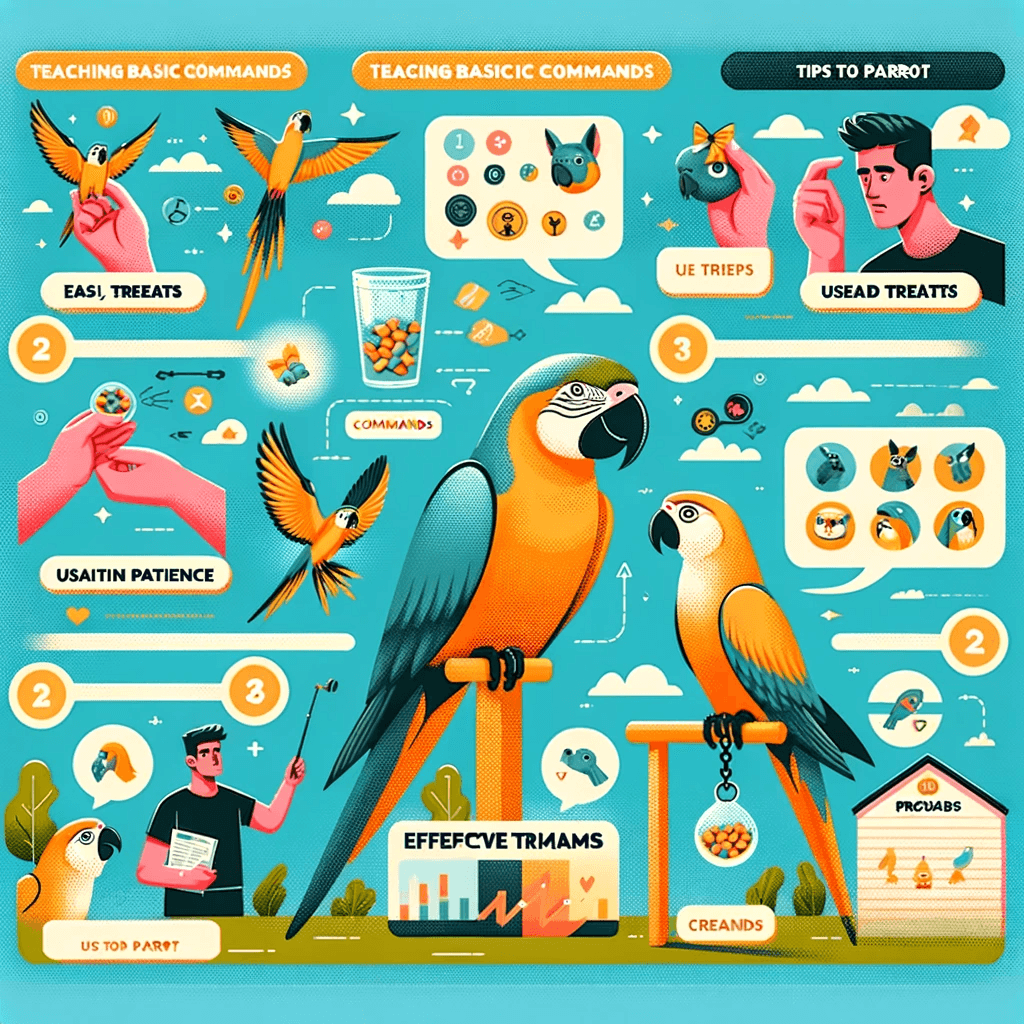
How to Train a Parrot to Come to You
i. Establishing a Positive Association
Building a positive association is the first step to get your parrot eagerly flying to your side. Create an environment where coming to you is a delightful experience for your feathered friend. Turn “come” into your parrot’s favorite command!
ii. Using Treats and Rewards
Who can resist a tasty incentive? Discover the power of treats and rewards in parrot training. Select the perfect treats and use them strategically to reinforce the “come” command. Thus, your parrot will be motivated and ready to impress!
iii. Gradual Training Process
Patience is key when teaching your parrot to come to you. Ensure a smooth and stress-free training journey. From short flights to longer distances, watch as your parrot masters the art of coming to you at the sound of your call.
Get ready to witness your parrot’s newfound skill as it gracefully lands on your shoulder, ready to engage in delightful conversations! 🦜✨
How to Train a Parrot to Be Friendly
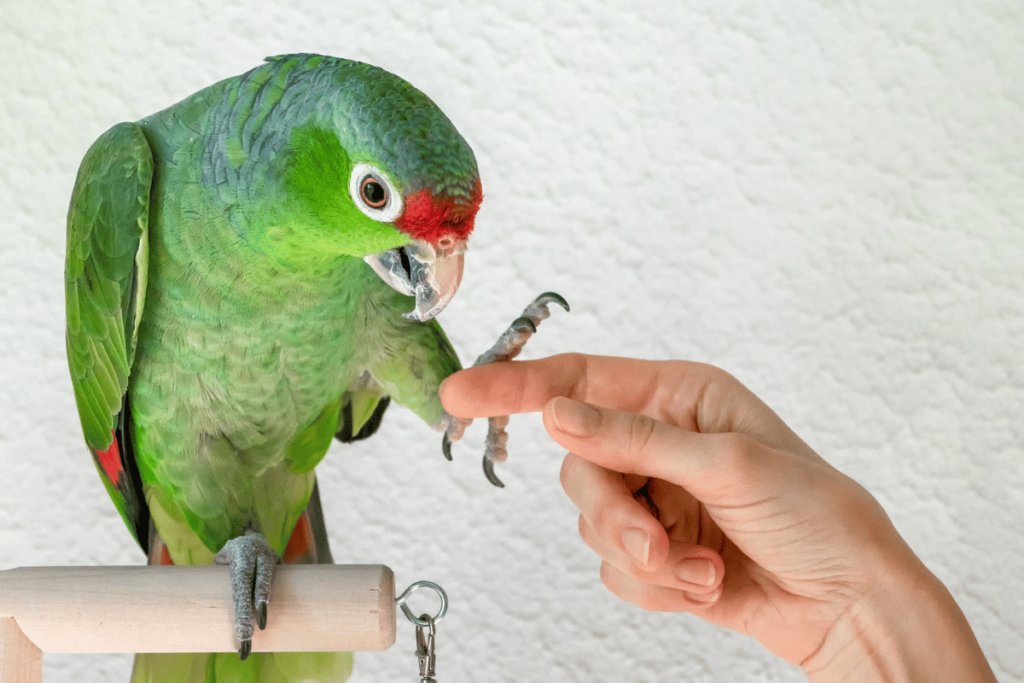
i. Building Trust and Bond
Imagine your parrot as a new friend entering your life. The first step in making this friendship flourish is building trust. Begin with gentle interactions, respecting your parrot’s space, and letting it come to you at its own pace.
Understand your parrot’s body language – it’s like their way of speaking without words. With time, patience, and positive experiences, watch as a beautiful bond forms between you and your feathered friend.
ii. Socializing with Your Parrot
Let’s turn your parrot into a social superstar!
Engage in activities that your parrot finds enjoyable. Whether it’s playing with toys or sharing a meal, create moments that your parrot associates with happiness.
Soon, you’ll notice your parrot eagerly seeking your company, ready to be an active part of your social circle.
iii. Positive Reinforcement Techniques
Now, let’s talk about the magic of positive reinforcement. Picture your parrot responding to your affectionate words and favorite treats – that’s the power of positive reinforcement.
Use rewards to celebrate good behavior, creating a positive association. Soon, your parrot will start connecting being friendly with the joy of receiving treats and praise.
How to Train a Parrot Not to Bite
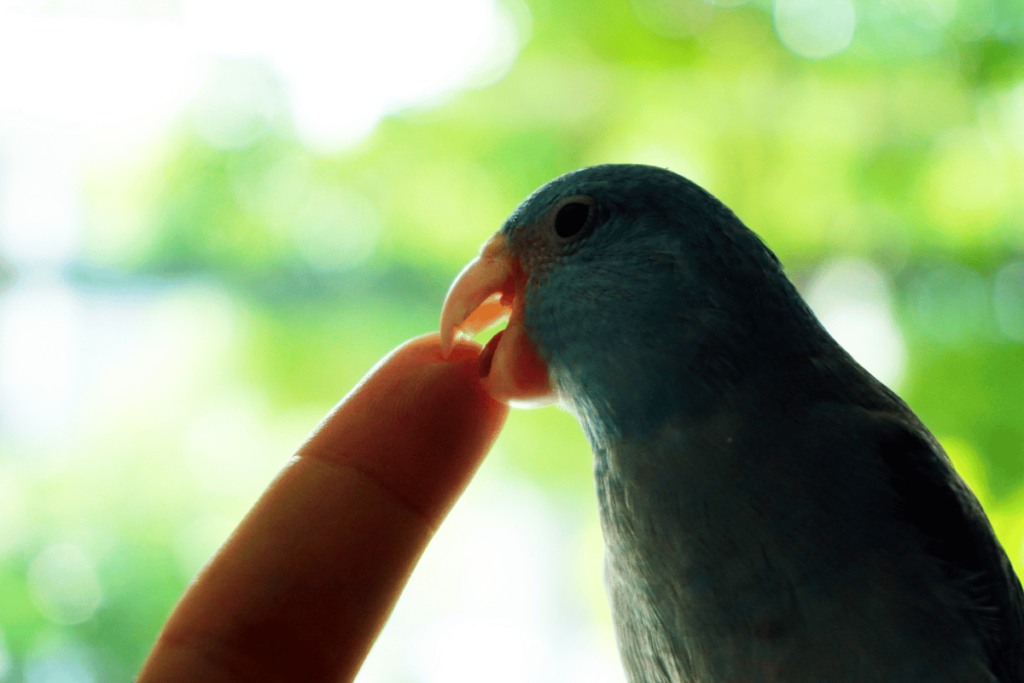
i. Identifying Triggers
Imagine having a conversation with your parrot, free from any nips or bites. To make this a reality, first, we need to understand what triggers biting behavior.
Pay close attention to your parrot’s reactions in different situations. Is it feeling threatened, scared, or simply asserting its territory? Identifying these triggers is the key to preventing bites.
ii. Redirecting Negative Behavior
Now that we know the triggers, let’s talk about steering away from negative behavior. When you sense your parrot getting agitated, introduce alternative actions that redirect its focus.
It could be a favorite toy or a change in the environment. By providing alternatives, you’re helping your parrot express itself without resorting to biting.
iii. Consistent Training Approach
Consistency is the backbone of successful parrot training. Establish clear boundaries and consequences for biting, and stick to them consistently.
Whether it’s a firm “no” or a brief timeout, your parrot needs to understand the correlation between biting and the associated consequences.
This way, you’re creating a predictable environment that discourages biting behavior.
Picture a harmonious interaction where you and your parrot communicate without fear of bites. By identifying triggers, redirecting negative behavior, and maintaining a consistent approach, you’re on the path to creating a bite-free and enjoyable relationship with your feathered friend. 🦜🚫
How to Train a Parrot to Sit on Your Hand

i. Gradual Hand Introduction
Imagine the joy of having your parrot comfortably perched on your hand – it’s a magical connection! To make this happen, start with a gradual hand introduction.
Allow your parrot to get accustomed to the feel of your hand by using slow and gentle movements.
It’s all about building trust, so take it step by step until your parrot feels secure and relaxed in your hands.
ii. Using Perches and Stands
Let’s add some supportive elements to the training process. Introduce perches and stands to create a safe and comfortable environment for your parrot.
This not only enhances its sense of security but also provides different surfaces for perching. Experiment with various perches and stands to find what your parrot enjoys, making the hand-sitting experience more enticing.
iii. Reinforcing the Sitting Behavior
Now, let’s reinforce the desired behavior of sitting on your hand. When your parrot successfully perches on your hand, shower it with positive reinforcement.
Use treats, gentle praises, and affectionate words to create a positive association with the sitting behavior. Consistency is key here – the more positive experiences your parrot associates with hand-sitting, the more likely it is to become a regular occurrence.
Visualize the incredible bond you’ll share as your parrot confidently sits on your hand, ready to start on countless adventures together! 🦜🤲
General Tips for Successful Training
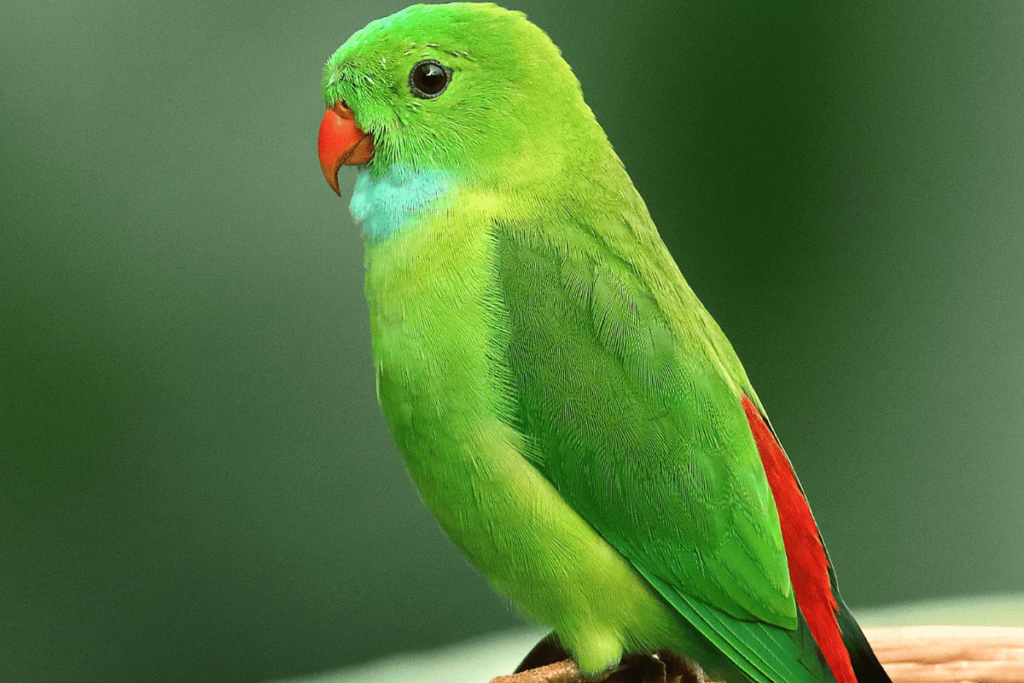
Consistency is Key
Consistency lays the foundation for successful parrot training. Regular and predictable routines help your parrot understand expectations and build a sense of security.
Whether it’s the timing of training sessions, commands, or consequences, maintaining consistency is crucial for creating a structured and effective learning environment.
Patience and Positive Reinforcement
Patience is your greatest ally in the world of parrot training. Understand that every feathered friend learns at its own pace, and pushing too hard can lead to stress.
Embrace a patient approach, celebrating small victories and progress. Positive reinforcement, through treats, praise, and affection, will motivate your parrot to eagerly participate in the training process.
Understanding Your Parrot’s Personality
Every parrot is unique, with its own quirks and charms. Take the time to observe and understand your parrot’s personality.
Recognize what excites, calms, or motivates your feathered friend. Tailor your training techniques to suit its individual preferences, creating a personalized learning experience that resonates with your parrot’s distinctive character.
Envision a training journey filled with consistency, patience, and a deep understanding of your parrot’s personality.
By incorporating these general tips, you’ll create an enriching and enjoyable training environment for both you and your talkative companion! 🦜🌟
Recommendation: Enhance Training with Treats, Toy, and Clickers
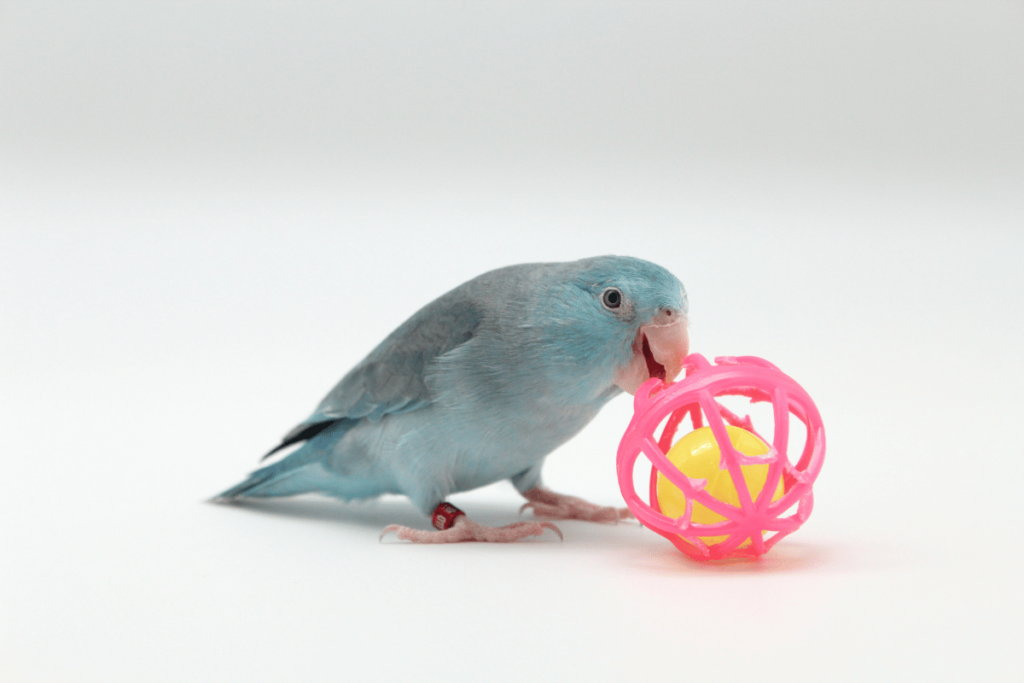
Recommended Parrot Training Treats
Elevate your training sessions with the perfect treats for your parrot. Explore a variety of recommended parrot training treats that not only tickle your feathered friend’s taste buds but also serve as powerful motivators during learning sessions. From nutty delights to fruity bites, discover treats that make training an irresistible experience for your parrot.
Quality Parrot Perches and Stands
Create a training space that’s both comfortable and stimulating with quality parrot perches and stands. Select the right perches and stands to cater to your parrot’s preferences. Whether it’s a cozy wooden perch or an interactive stand, these additions not only enhance the training environment but also contribute to your parrot’s overall well-being.
Interactive Toys for Mental Stimulation
Keep your parrot’s mind active and engaged with a selection of interactive toys designed for mental stimulation. Unveil toys that challenge your parrot’s intellect, turning training sessions into enjoyable and enriching experiences. From puzzle feeders to colorful playthings, these toys enhance your parrot’s cognitive abilities while making training a fun-filled adventure.
Training Clickers and Whistles
Incorporate precision into your training routine with specialized tools like training clickers and whistles. Discover the effectiveness of these accessories in reinforcing positive behavior and signaling commands to your parrot. We’ll share insights on how to integrate these tools seamlessly into your training sessions, taking your communication with your parrot to the next level.
Explore these to transform your parrot training experience into a dynamic and rewarding journey for both you and your feathered friend! 🦜🛍️
Conclusion: How to Train a Parrot to Talk
In conclusion, the journey of training your parrot to talk is not just about words; it’s about building a bond that transcends the ordinary. With the 7 Proven Secrets shared in this article, you’re equipped to turn your feathered companion into a delightful chatterbox, enriching your daily interactions and creating lasting memories.
As you dive into the exciting world of parrot training, remember that patience, consistency, and the joy of shared moments are the true keys to success. Your parrot’s newfound ability to talk will undoubtedly enhance the unique connection you share, making every day a delightful adventure.
And if you’re a pet lover seeking more insights into the wonderful world of companion animals, consider exploring our comprehensive pet guide. From the charm of golden retriever dogs to the art of traveling with your pets, we’ve got a treasure trove of tips and information waiting for you. Join us in creating a life filled with love, laughter, and the companionship of our beloved pets.
Happy training and may your parrot’s words bring endless joy to your shared adventures! 🦜💬
Can all parrots be trained to talk?
While many parrot species have the ability to mimic human speech, individual capabilities vary. Some parrots are more inclined to talk, such as African Greys and Amazons, but with patience and consistent training, many parrots can learn basic words and phrases.
At what age should I start training my parrot to talk?
It’s ideal to start training when your parrot is young, as they tend to be more receptive to learning. However, older parrots can also be trained with patience. The key is to begin training in a calm and positive environment.
How do I choose the right words or phrases to teach my parrot?
Select words or phrases that are clear and easy for your parrot to mimic. Start with simple, commonly used words and phrases like “hello,” “goodbye,” or the parrot’s name. Be consistent in your choice of words during training sessions.
What’s the best way to create a positive association for talking?
Use positive reinforcement techniques such as treats, praise, or affection when your parrot utters words correctly. Create a cheerful environment during training to associate talking with positive experiences.
How long does it typically take for a parrot to start talking?
The time it takes for a parrot to start talking varies based on the individual bird and the consistency of training. Some parrots may begin mimicking words within a few weeks, while others may take several months.
How do I prevent my parrot from picking up unwanted words or sounds?
Be mindful of your parrot’s surroundings and avoid exposing them to words or sounds you don’t want them to mimic. Reinforce positive behaviors and ignore or redirect unwanted ones.
Can I train my parrot to talk using an app?
Yes, there are apps designed to assist in parrot training. These apps often provide interactive tools and mimicry exercises to help reinforce speech. However, consistent hands-on training and interaction with your parrot are crucial for success.
Can parrots learn to talk in different languages?
Yes, parrots can learn to mimic words in different languages. The key is consistent repetition and positive reinforcement. Keep in mind that clear pronunciation is essential for accurate mimicry.
How do I handle frustration if my parrot isn’t learning to talk as quickly as I’d like?
Patience is key in parrot training. If progress is slow, reassess your training methods and adjust as needed. Celebrate small victories, and remember that each parrot learns at its own pace.
Are there specific words or sounds that parrots should avoid learning?
Avoid teaching your parrot words or sounds that may be inappropriate or offensive. Additionally, be cautious with loud or alarming sounds, as parrots may mimic these in stressful situations.

